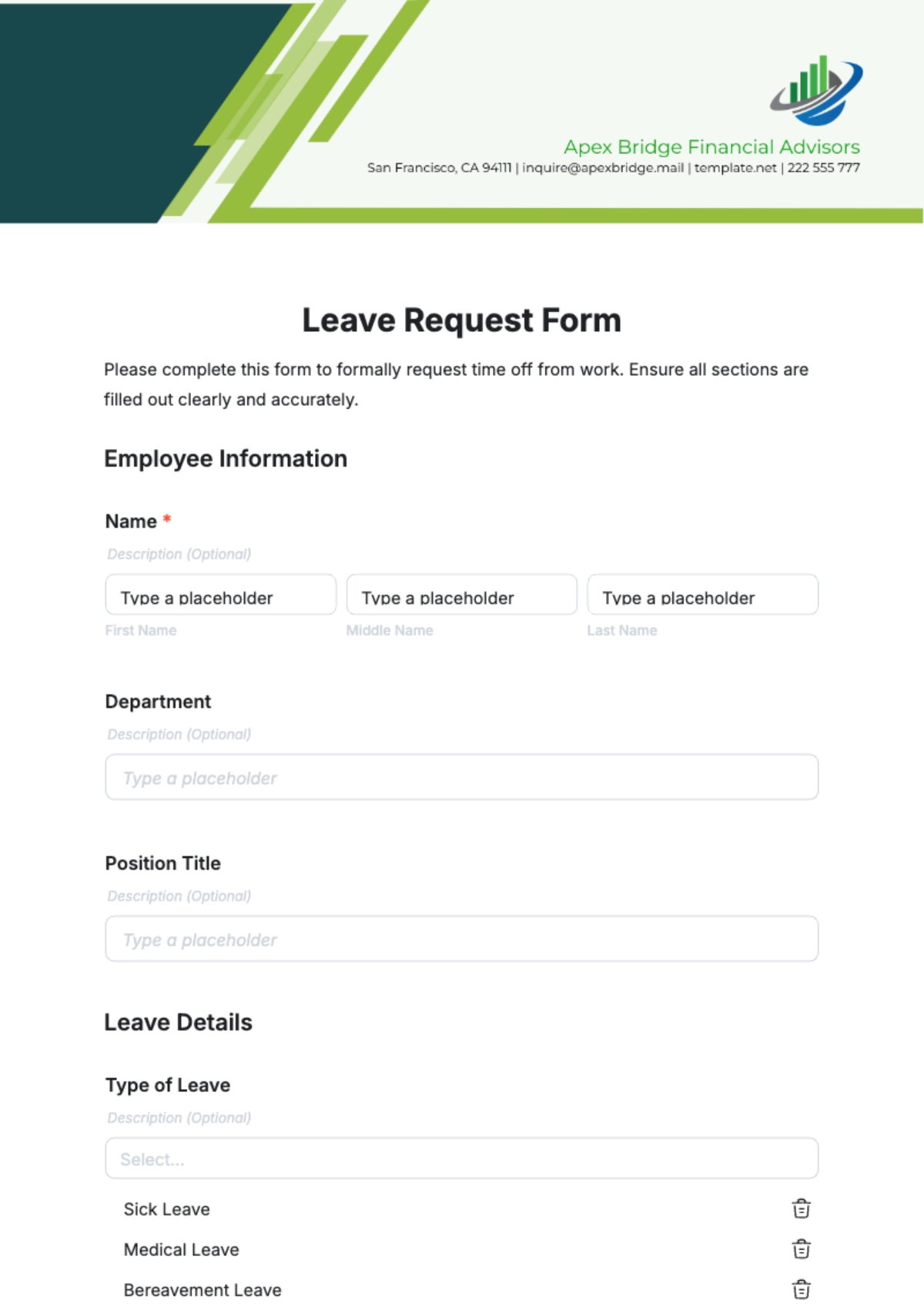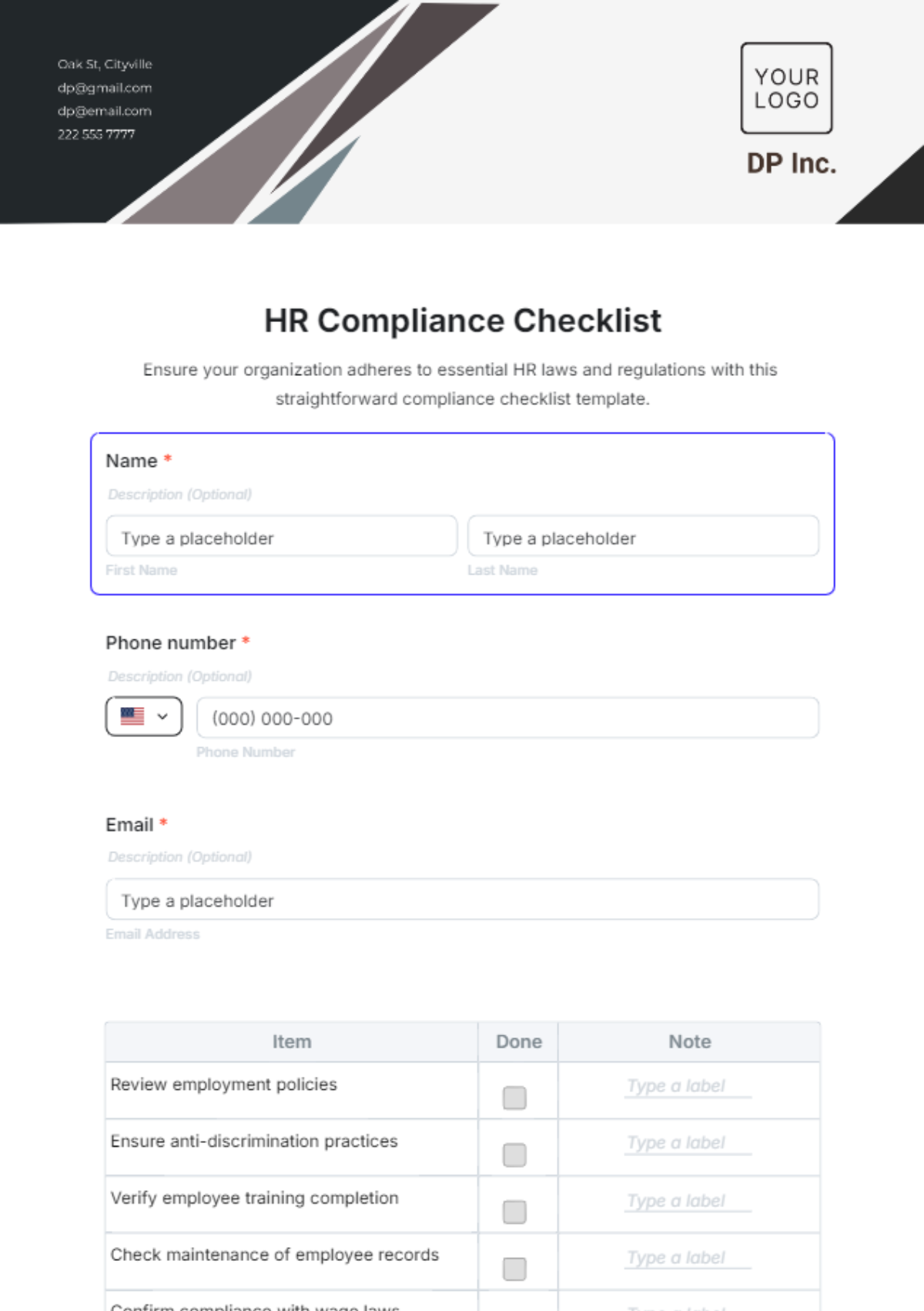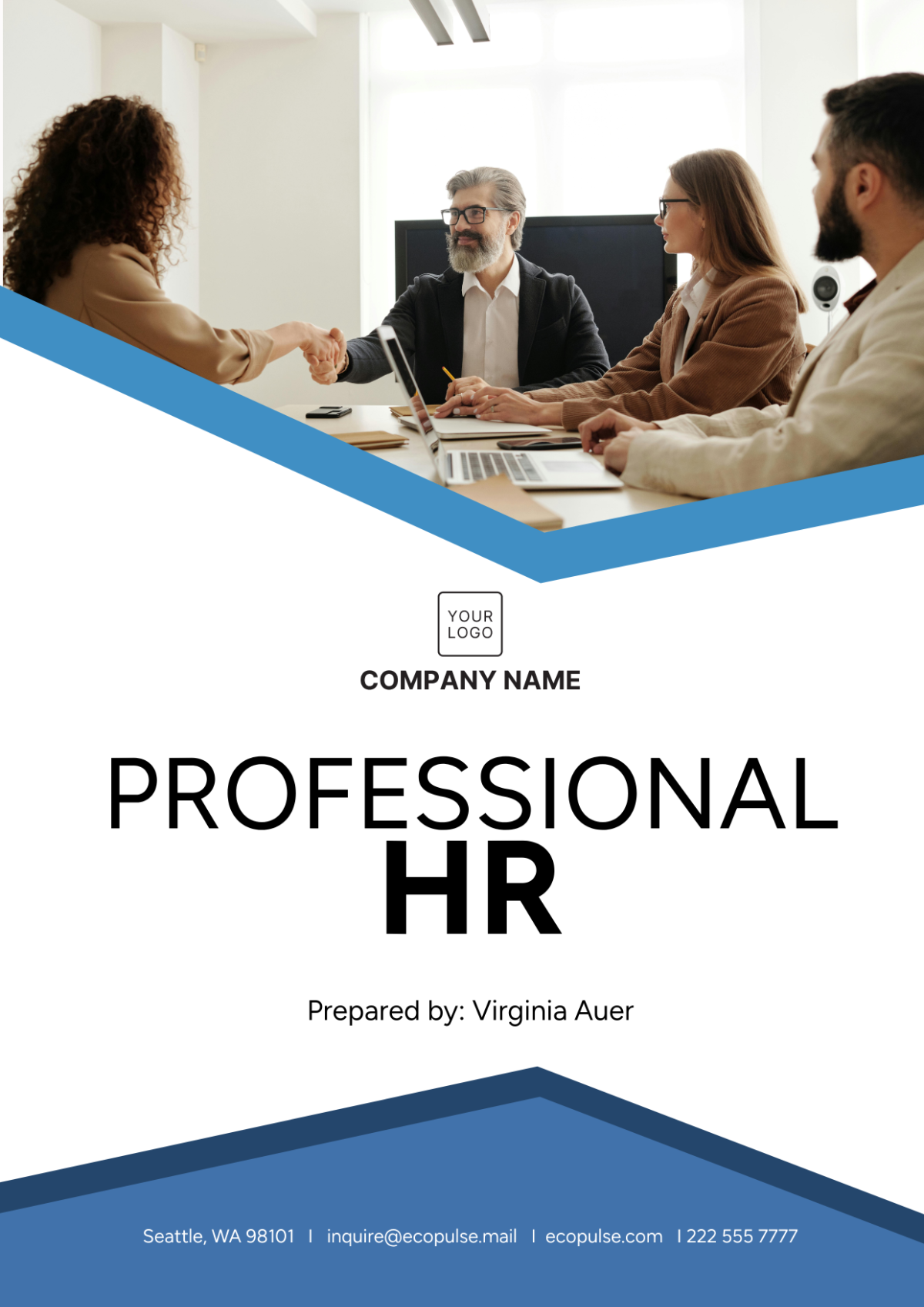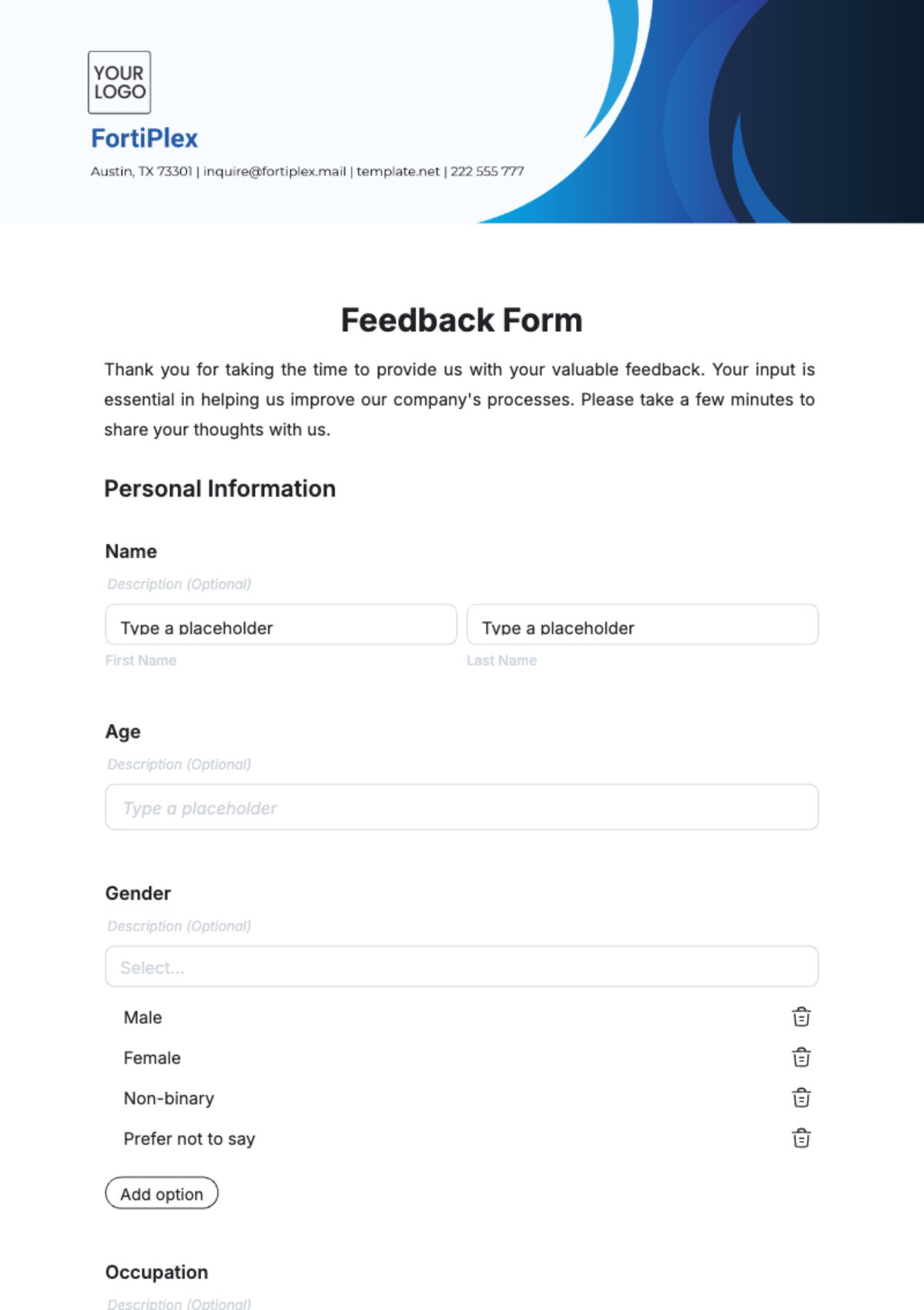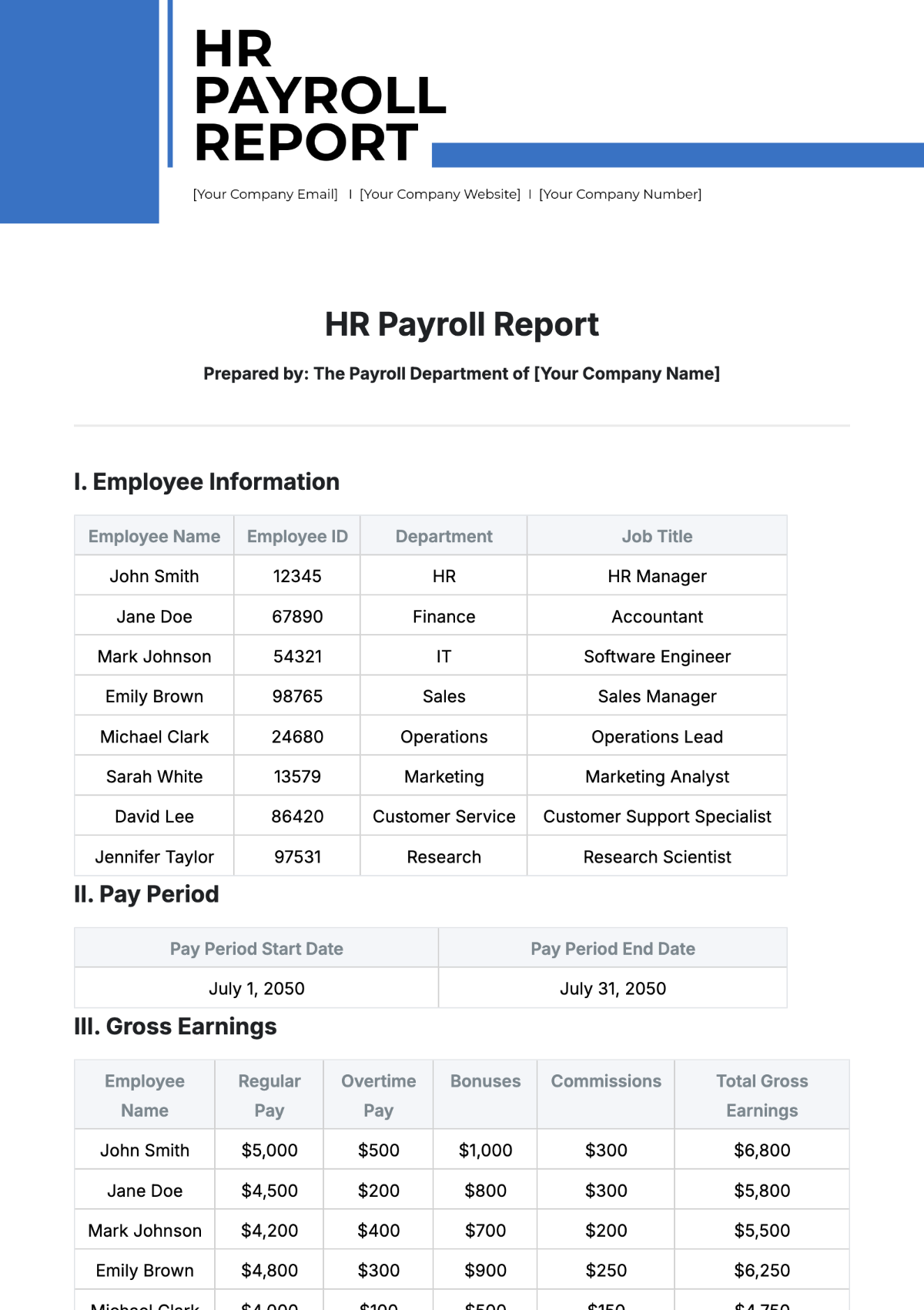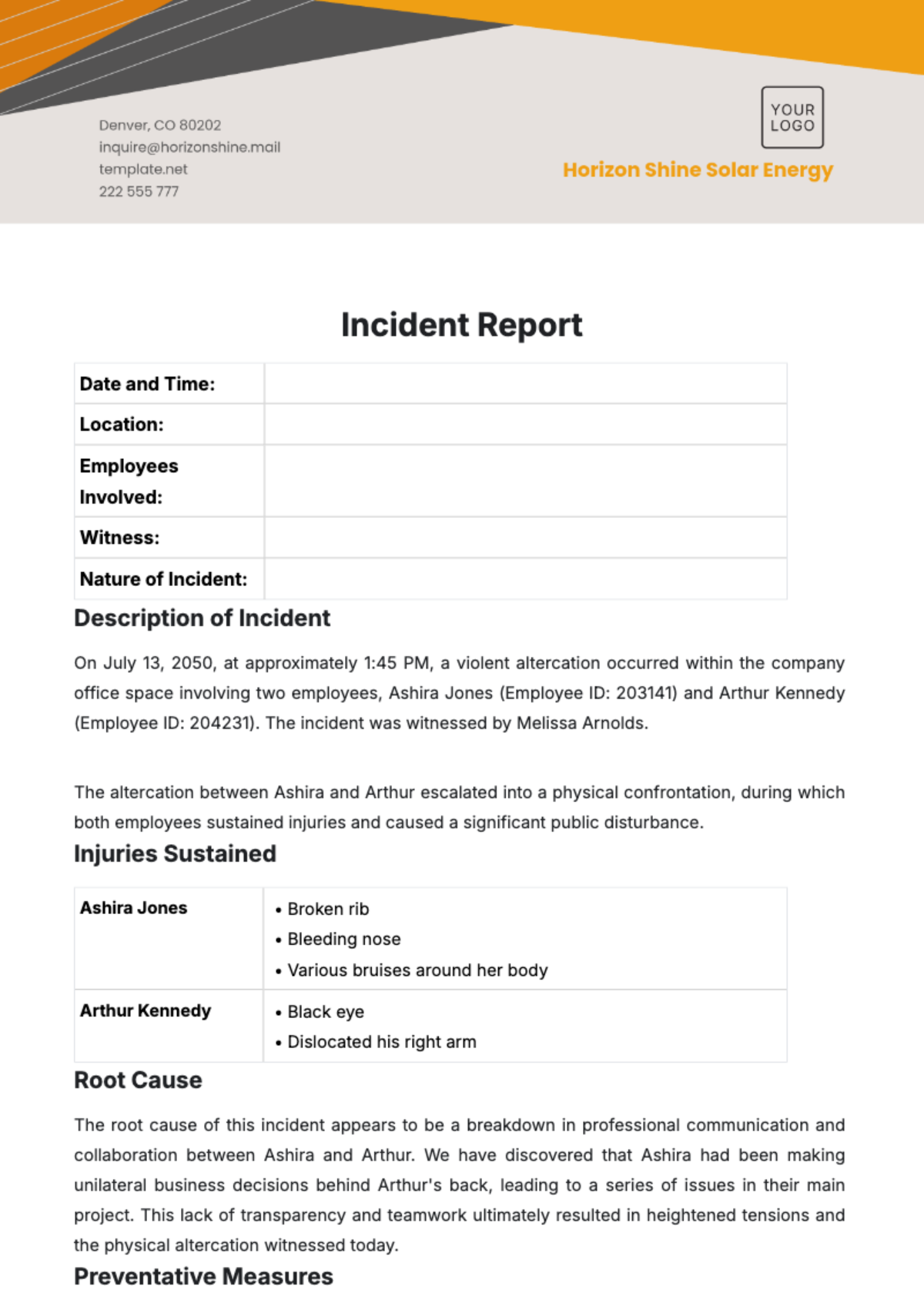Free Comprehensive Guide to Diversity and Inclusion in the Workplace HR Template
Comprehensive Guide to Diversity and Inclusion in the Workplace
Table of Contents
A. Introduction to Diversity and Inclusion.........................................................2
B. Diversity Dimensions...........................................................................................2
C. Role of Leadership in Promoting D&I.............................................................4
D. Recruitment and Hiring with Diversity and Inclusion...............................4
E. Training and Education for Diversity and Inclusion (D&I).......................6
F. Avoiding Microaggressions................................................................................6
G. Fostering Inclusion in the Workplace............................................................8
H. Employee Resource Groups (ERGs): Purpose and Benefits.................9
I. Measuring Progress.............................................................................................10
J. Addressing Unconscious Bias.........................................................................10
K. Policies and Procedures...................................................................................12
A. Introduction to Diversity and Inclusion
Definition of Diversity and Inclusion
Diversity and Inclusion (D&I) in the workplace refer to fostering an environment where every individual, regardless of their background, identity, or characteristics, is valued and empowered. It's about embracing and celebrating the unique perspectives, experiences, and talents that each person brings. D&I encompasses dimensions such as race, ethnicity, gender, age, sexual orientation, disability, religion, and socioeconomic background.
Business Case for Diversity and Inclusion
Embracing D&I is not only a moral commitment but also a strategic advantage. Diverse teams offer a broader range of perspectives, fostering innovation, better decision-making, and improved problem-solving. Inclusive workplaces exhibit higher employee morale, engagement, and productivity. D&I efforts can enhance an organization's reputation, attract top talent, and bolster profitability.
Legal Framework
Compliance with the legal framework is essential. US laws like Title VII, ADA, and ADEA mandate equal employment opportunities and prohibit discrimination based on various factors. Organizations must align their policies and practices with these legal requirements while nurturing a culture of inclusion.
B. Diversity Dimensions
Diversity in the workplace encompasses various dimensions that define the unique characteristics and backgrounds of employees.
Here are the key diversity dimensions:
Race and Ethnicity | Embracing diversity in race and ethnicity means acknowledging and appreciating the rich tapestry of backgrounds and experiences that employees bring. It involves creating a workplace that values and respects individuals regardless of their racial or ethnic identity. |
Gender | Gender diversity recognizes that individuals may identify as male, female, a blend of both, or neither. It emphasizes the importance of gender equality and inclusivity, ensuring that all employees, regardless of their gender identity, have equal opportunities, respect, and support in the workplace. |
Age | Age diversity encompasses a wide range of generations, from Baby Boomers to Generation Z. It emphasizes the value of different life experiences, perspectives, and skills that each age group brings. |
Sexual Orientation | Acknowledges that individuals may identify as heterosexual, homosexual, bisexual, pansexual, asexual, or other orientations. An inclusive workplace ensures that employees can be open about their sexual orientation without fear of discrimination, fostering a culture of acceptance and respect. |
Disability | An inclusive workplace accommodates disabilities, providing equal opportunities, accessible facilities, and support to ensure all employees can perform their jobs effectively. |
Religion | Religious diversity encompasses different belief systems, faiths, and practices. It involves respecting and accommodating various religious beliefs and ensuring that employees can practice their religion without discrimination or prejudice. |
C. Role of Leadership in Promoting D&I
Leaders play a central role in shaping an organization's culture and values. When it comes to D&I, leadership sets the tone by demonstrating a commitment to fostering an inclusive workplace. Leaders should:
● Articulate a Vision
● Align Policies and Practices
● Allocate Resources
● Promote Open Dialogue
● Lead by Example
Accountability and Metrics
Accountability and metrics are crucial for measuring progress and ensuring that D&I efforts are making a tangible impact. Leadership accountability involves:
● Setting Clear Goal
● Assigning Responsibility
● Monitoring Progress
● Transparency
● Adjusting Strategies
D. Recruitment and Hiring with Diversity and Inclusion
Recruitment and hiring are critical stages where organizations can proactively advance diversity and inclusion (D&I) efforts.
Inclusive Recruitment Strategies
Inclusive recruitment strategies aim to attract and select a diverse pool of candidates while ensuring a fair and equitable hiring process. Key components of inclusive recruitment include:
● Diverse Job Descriptions ● Unbiased Job Advertisements ● Inclusive Interview Panels | ● Structured Interviews ● Transparency
|
Reducing Bias in Hiring
Bias in hiring can unintentionally exclude qualified candidates and perpetuate inequality. Strategies to reduce bias in hiring include:
● Implicit Bias Training
● Blind Recruitment
● Structured Assessments
● Diversity Training for Interviewer
● Diverse Interview Panels
Diverse Candidate Sourcing
Sourcing a diverse pool of candidates is crucial for building a diverse workforce. Strategies for diverse candidate sourcing include:
● Networking
● Partnerships
● Employee Referral Programs
● Internship and Apprenticeship Programs
● Online Platforms
Training and Education
Training and education are essential components of a successful D&I strategy. They include:
● Employee Training
● Managerial Training
● Bias Mitigation Training
● Mandatory Compliance Training
● Continuous Learning
E. Training and Education for Diversity and Inclusion (D&I)
This section covers D&I training for all employees, strategies to avoid microaggressions, building cultural competency, and creating an inclusive culture.
D&I Training for All Employees
Providing D&I training for all employees is a cornerstone of fostering an inclusive workplace. Key elements of D&I training include:
Awareness | Raise awareness about the importance of D&I, its benefits, and the organization's commitment to it. |
Understanding Bias | Educate employees about unconscious biases and their impact on decision-making and interactions. |
Inclusive Behaviors | Teach employees how to recognize and exhibit inclusive behaviors in their daily work. |
Respect and Sensitivity | Promote respect for diverse perspectives and cultural sensitivity in all interactions. |
Communication Skills | Enhance communication skills to facilitate open dialogues and bridge differences. |
Legal Compliance | Ensure that employees understand the legal framework related to D&I, including anti-discrimination laws. |
F. Avoiding Microaggressions
Microaggressions are subtle, often unintentional, actions or comments that marginalize individuals based on their background. To avoid microaggressions:
● Education: Provide training that helps employees recognize and avoid microaggressions in their language and behavior.
● Cultural Competency: Promote cultural competency, helping employees understand diverse backgrounds and perspectives.
● Open Communication: Encourage employees to communicate openly if they experience or witness microaggressions.
● Accountability: Hold individuals accountable for addressing and rectifying microaggressions when they occur.
● Feedback Mechanisms: Establish anonymous reporting mechanisms for employees to report microaggressions safely.
Building Cultural Competency
Cultural competency is the ability to interact effectively with people from different cultural backgrounds. Strategies for building cultural competence include:
Cultural Training Offer training sessions that explore different cultures, customs, and traditions, promoting understanding and respect.
Cross-Cultural Communication Provide guidance on effective communication when interacting with colleagues or clients from diverse backgrounds.
Experiential Learning Encourage employees to engage in cultural experiences and activities to broaden their perspectives.
Diverse Experiences Create opportunities for employees to share their diverse experiences, fostering empathy and awareness.
Mentoring and Coaching Pair employees with mentors or coaches from different backgrounds to facilitate cultural learning. |
Creating an Inclusive Culture
Creating an inclusive culture is a collective effort that involves everyone in the organization. Strategies for achieving this include:
● Leadership Commitment
● Inclusive Policies
● Employee Resource Groups (ERGs)
● Regular Feedback
● Celebrating Diversity
G. Fostering Inclusion in the Workplace
Fostering inclusion in the workplace is crucial for creating a diverse and equitable environment where all employees feel valued and respected.
Strategies for Fostering Inclusion
Fostering inclusion requires deliberate efforts and strategies to ensure that every employee's unique perspective is acknowledged and valued. Key strategies include:
● Leadership Commitment
● Diversity Training
● Inclusive Policies
● Inclusive Decision-Making
● Feedback Mechanisms
Encouraging Open Communication
Open and transparent communication is essential for fostering inclusion. Strategies to encourage open communication include:
● Listening Actively
● Anonymous Reporting
● Regular Check-Ins
● Diverse Voices
● Town Hall Meetings
Promoting a Sense of Belonging
Creating a sense of belonging is crucial to inclusion. Strategies for promoting a sense of belonging include:
● Recognition and Appreciation
● Mentoring and Sponsorship
● Employee Well-Being
● Career Development
● Inclusive Celebrations
Employee Resource Groups (ERGs)
Employee Resource Groups (ERGs) are voluntary, employee-led groups formed around shared characteristics, interests, or experiences. ERGs play a significant role in fostering inclusion by:
● Providing Support
● Advocacy
● Cultural Awareness
● Networking
● Community Engagement
Here’s a list of Employee Resource Groups (ERGs) that organizations can consider establishing to promote diversity and inclusion:
● Women's Network ● LGBTQ+ Pride Network ● Multicultural Network ● Veterans' Alliance ● Parents and Caregivers Network | ● Disability and Accessibility Network ● Young Professionals Network ● Mental Health and Well-Being Network ● Environmental Sustainability Network ● Generational Diversity Network |
H. Employee Resource Groups (ERGs): Purpose and Benefits
Employee Resource Groups (ERGs) are voluntary, employee-led organizations within a company that bring together individuals with shared characteristics, backgrounds, or interests. ERGs serve several essential purposes and offer numerous benefits for both employees and the organization.
Purpose of ERGs | Benefits of ERGs |
Employee Resource Groups (ERGs) serve as vital networks within an organization, fostering a sense of belonging and advocacy. They empower employees with shared characteristics, backgrounds, or interests to connect, develop leadership skills, and promote cultural awareness. ERGs also elevate underrepresented voices and contribute to a more inclusive workplace culture. | ERGs offer numerous advantages, including enhanced inclusivity through diverse perspectives, innovative thinking, and cultural understanding. They attract and retain diverse talent, bolster leadership pipelines, boost employee morale, and contribute to an organization's commitment to social responsibility. ERGs ultimately strengthen workplace culture, driving positive change and innovation. |
I. Measuring Progress
To assess the impact of ERGs and measure progress:
● Establish MetricsCollect Data
● Feedback Surveys
● Evaluate Impact
● Continuous Improvement
J. Addressing Unconscious Bias
This section covers strategies for identifying and mitigating bias, promoting bias-free decision-making, implementing a bias incident reporting system, and handling discrimination and harassment effectively.
Identifying and Mitigating Bias
Recognizing and mitigating unconscious bias is crucial for fostering a fair and inclusive workplace. These strategies help employees and leaders navigate bias more effectively.
● Education and Awareness
● Self-Reflection
● Diverse Perspectives
● Checklists and Guidelines
● Feedback Culture
Bias-Free Decision-Making
Promoting unbiased decision-making processes is essential for a diverse and equitable workplace. These strategies guide fair decision-making, benefiting the organization and its employees.
● Structured Processes
● Diversity in Leadership
● Metrics and Accountability
● Regular Audits
● Transparency
Bias Incident Reporting
Establishing a robust reporting system is vital for addressing bias incidents promptly and effectively. These measures ensure a safe environment for all employees to report concerns.
Clear Reporting Channels Establish clear and confidential channels for reporting bias incidents, including both formal and anonymous options.
Prompt Response Respond promptly to reports of bias incidents, conducting thorough investigations as needed.
Supportive Measures Provide support to affected individuals, including counseling, if necessary, and taking steps to prevent retaliation.
Documentation Maintain records of reported incidents, investigations, and actions taken to address them.
Prevention Use incident data to identify patterns and implement preventive measures, such as additional training or policy adjustments. |
Handling Discrimination and Harassment
Effective handling of discrimination and harassment complaints is essential for maintaining a respectful workplace. These procedures protect employees and uphold organizational values.
Policy Enforcement 🠟 Investigation Process 🠟 Consequences 🠟 Prevention Training 🠟 Cultural Shift |
K. Policies and Procedures
Robust policies and procedures are the foundation of a fair and inclusive workplace. They establish clear guidelines for behavior, set expectations for diversity and inclusion, and outline consequences for violations.
Reporting Mechanisms
1. Accessible Channels
2. Confidentiality Assurance.
3. Clear Guidelines
4. Immediate Response
5. Impartial Investigation
6. Documentation
7. Supportive Measures
8. Feedback
9. Preventive Measures












